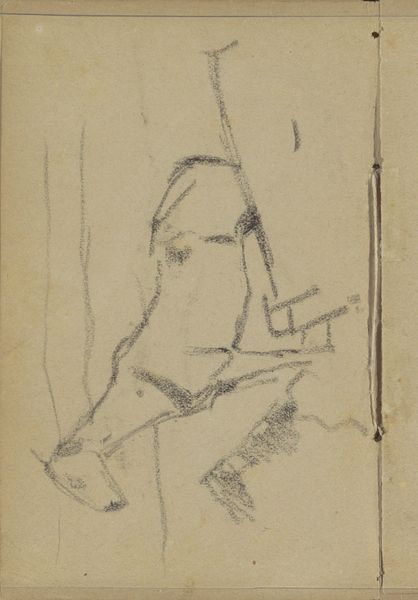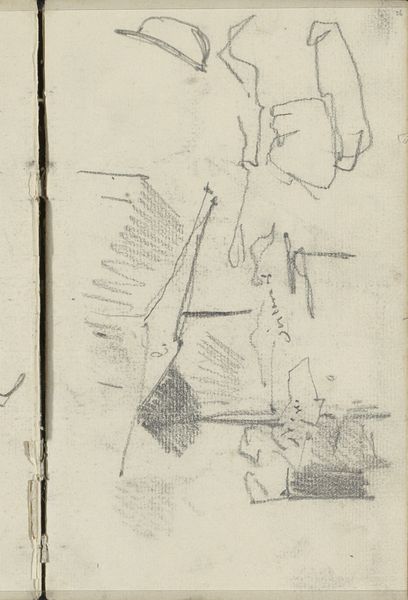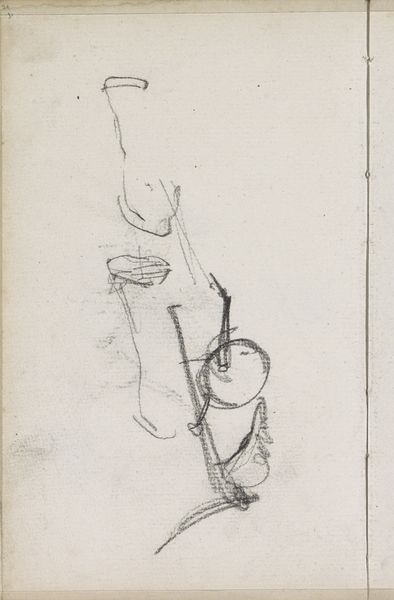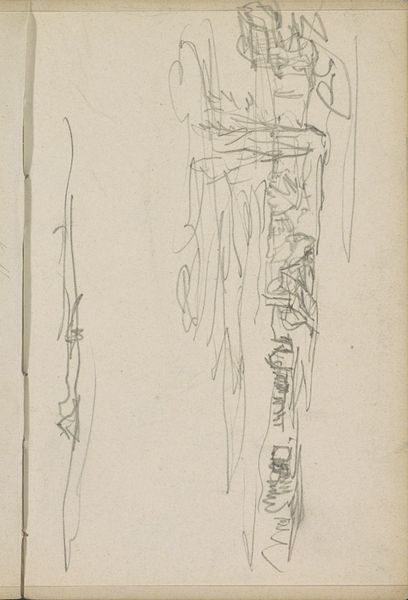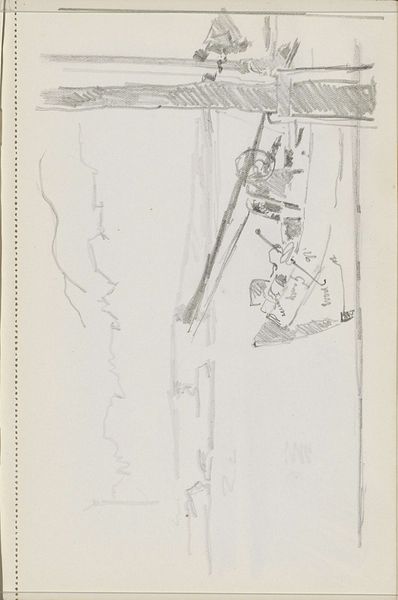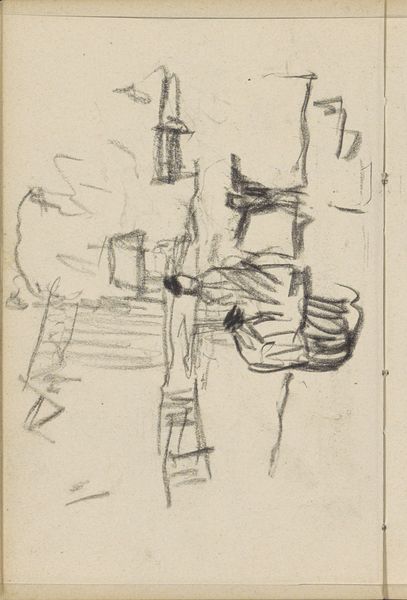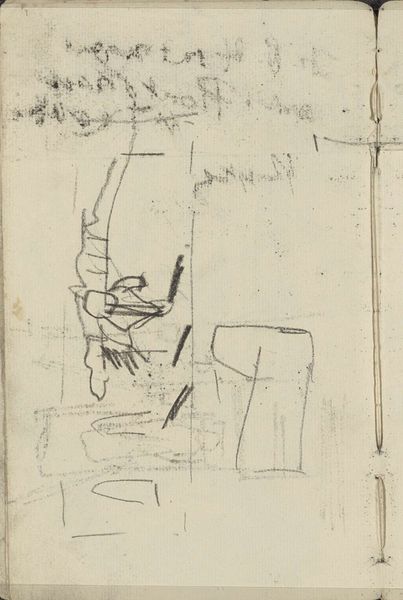
drawing, pencil, graphite
#
drawing
#
impressionism
#
landscape
#
figuration
#
sketch
#
pencil
#
graphite
Copyright: Rijks Museum: Open Domain
Curator: Looking at George Hendrik Breitner's "Figuurstudies en mogelijk een boom," created between 1883 and 1885, what's your immediate reaction to it? Editor: A flurry of graphite. It looks as though Breitner was attempting to capture a fleeting moment, a whisper of movement and light. What particularly strikes me is the rawness, the artist's hand so evident in each stroke. Curator: Indeed. The Rijksmuseum holds this drawing executed with graphite and pencil on paper. What interests me are Breitner’s studies in figuration and form. The drawing allows insight into artistic training, academic conventions, and the societal contexts in which these forms were practiced and popularized. Editor: Right, the immediacy afforded by the sketch underscores the conditions of artistic labor itself. I am drawn to think about the role of sketches and the act of drawing within broader systems of artistic production. What did such a sketch signify socially, culturally, and perhaps economically, in comparison to more ‘finished’ works, what we’d recognize and consume more readily? Curator: It reveals how the infrastructure of art, like academic art schools and even museum holdings, perpetuated hierarchies through style, content, and context. One begins to ponder who the figures in these sketches are; what his access was like; and whether these subjects are models, passersby, or something in-between. How do social hierarchies reflect artistic styles and institutional decisions? Editor: Exactly. Considering Breitner's engagement with Impressionism, one wonders about his intention here. Was he deliberately rejecting polished, academic styles, or was this simply a preparatory piece? Curator: Or was the labour involved also of central concern, influencing and affected by the aesthetic choices he made? Editor: It raises questions about how we define ‘finished’ versus ‘unfinished’ and where those judgements place the work in art history— and within a capitalist system, if we're truly thinking materially. What, even, does an ‘Impressionist sketch’ mean within these material conditions? Curator: The loose, ephemeral style contrasts starkly with the labor-intensive, realistic styles favoured by earlier institutions. What seems spontaneous may in fact be calculated, especially considering how the sketch's visibility impacts Breitner's own public standing. Editor: So true. Perhaps that ‘Impressionistic’ aesthetic has been fetishized in the art market since its creation, creating value from its status as 'less finished.' Curator: And through this drawing, perhaps Breitner’s social position allowed him more expressive latitude compared to other, less privileged, peers. Editor: It’s a reminder to think critically about materials, means, and who ultimately gets to create and display ‘art,’ and what becomes deemed ‘valuable’ historically, culturally, and fiscally. Curator: Indeed, understanding how works like this exist in the social fabric is essential to moving towards a more transparent, and critical understanding of visual culture.
Comments
No comments
Be the first to comment and join the conversation on the ultimate creative platform.

